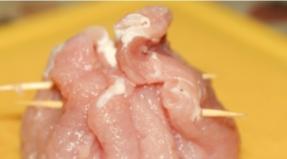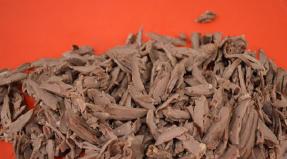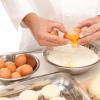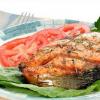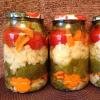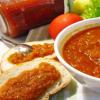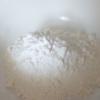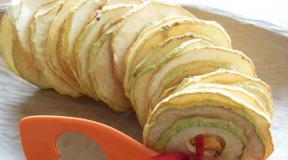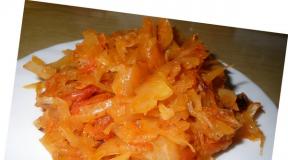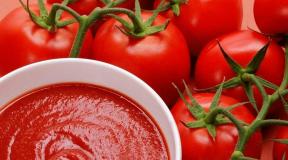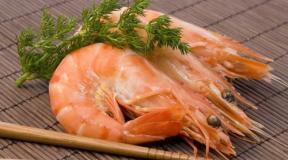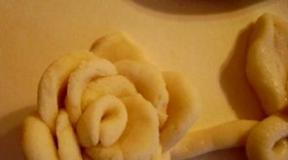Low-fat and mild cheese. Why low-fat cheese is good for you
Regular cheese is made from milk and natural sourdough by long aging and maturation. Such a product always contains a lot of fat and protein. However, there are low-calorie cheeses in which these parameters are lower than traditional ones. Therefore, they can be used in dietary nutrition and for weight loss.
Grained cheese
In European countries, cheese made from cottage cheese using fresh salted cream is called country cheese, or cottage cheese. This is usually a 5% fat product. Its 100 g contains 125 kcal.
Ricotta
Another type of curd cheese - ricotta - is made not from milk, but from whey. This is a product useful for the stomach and the whole body, in which methionine is present - an amino acid necessary for good liver function. Ricotta is a low-calorie cheese of 8-13% fat content. Consuming 100 g of it gives 174 kcal. It's better than regular curd.
Tofu
Tofu is a low-calorie vegetable cheese. It is made from soy milk. Therefore, the fat content is 6-8%. In taste, it is close to the Adyghe cheese or unsalted feta cheese. This is the most suitable product for a diet. 100 g of product - 90 kcal.
Mozzarella
Italian mozzarella cheese is made from skim milk. Therefore, it is usually 22.5% fat. It is sold in the form of balls dipped in a saline solution. There are several varieties of this cheese. Depending on this, the calorie level is set. However, it does not exceed 149-240 kcal per 100 g of product.
Feta
Feta is a type of Greek cheese. Natural feta is fat. But now we have learned to produce its low-calorie versions (feta-light). In it, the percentage of fat is 5-17 units. To purchase feta, you should carefully study the information about the product.
Chechil
Chechil is a special type of cheese produced in the form of threads woven into a braid. It is salty, similar in structure to suluguni. Its fat content is 5-10%. 100 g of chechil contains 313 kcal.
Gaudete
Fans of the famous creamy spicy Gouda cheese can replace it with a less nutritious product called Gaudete. Its fat content is 15%. 100 g - approximately 200 kcal.
All of these types of cheese are suitable for dietary nutrition and contribute to weight loss.
- the diet that people with diseases of the liver, biliary tract and gallbladder adhere to is a restriction in fats and cholesterol-containing foods. In the article "" I wrote that hard cheeses are high in protein, minerals, milk fat and cholesterol.
You obviously won't eat a lot of such a product, given that the daily intake of fat is limited to 90 grams, 30 of which must be of vegetable origin. How to be? Really retire cheese from the post of the main morning product? Try looking at a different shelf in the store first. As an alternative to gouda, emmentals, Dutch and other high-calorie cheeses, I suggest dietary Adyghe, ricotta and feta.
Feta - 290 kcal, fat content - 24%, proteins - 17 g
Let's start from the end: feta closes the top five of low-fat cheeses - the one without which it is impossible to imagine a Greek salad. The fat content of feta can go up to 50%, we will be satisfied with the option with 24%.
I’ll make a reservation right away: table number 5 does not allow openly salted cheeses, like feta cheese. Feta, although stored in brine, is delicate in taste. Therefore, there is no strict prohibition on it.
Feta takes a lot from sheep's milk, which is its basis. This cheese is rich in beta-carotene and vitamins A, E, K, D, group B, phosphorus, potassium, magnesium, iron, manganese, selenium, but most of all in it calcium and sodium.
There are so many useful lactic acid bacteria in feta that they are quite enough to eliminate gastrointestinal disorders, including those caused by food poisoning. True, only feta made from natural and unpasteurized sheep's milk possesses such properties.
Mozzarella - 160-280 kcal, fat content - from 17 to 24%, proteins - 28 g
Italian mozzarella is formally ranked fourth in our ranking. In fact, it shares one position with feta, since its fat content can reach the same 24%. But if you try, you can find a more dietary product with 17% fat content.
What is good about mozzarella? This young, tender cheese goes well with almost all vegetables, herbs and even berries. Like any natural cheese, mozzarella is rich in phosphorus and calcium, contains easily digestible protein and healthy fatty acids. At the same time, it should be noted that mozzarella is not a source of beneficial lactic acid bacteria: milk is fermented for it with the help of rennet, without additional microflora.
! Natural mozzarella has a very short shelf life - 5-7 days.
If the label shows a shelf life of more than a week, preservatives were definitely added to such mozzarella.
Adyghe cheese - 240 kcal, fat content - 14%, proteins - 19 g
Next in line is Adyghe cheese. For me, this is the perfect breakfast option. The previous two options are associated, rather, with an afternoon snack or five o "clock tea - this is more of a light snack. It is easy to start your day with the Adyghe one. Unlike mozzarella, it is produced by introducing lactic acid bacteria into pasteurized milk. At the same time, it tastes almost the same as its Italian counterpart.
Adyghe cheese is an integral part of the diet of not only patients following diet No. 5, but also of all those who are losing weight. It contains only 14% fat, 19 grams of protein and no carbohydrates at all.
Ricotta - 172 kcal, fat content from 8 to 24%, proteins - 11 g
Our ranking of the least fatty cheeses is topped by an Italian - ricotta. It's often called cheese, but let's be honest, it's more of a cottage cheese. Ricotta is made from whey, which remains after the preparation of other cheeses - mozzarella, for example. It does not contain ordinary milk proteins, only albumin, which is present in human blood (therefore, its absorption is faster and easier).
What cannot be taken away from ricotta is useful trace elements, vitamins and calcium. Cheese made from cow's milk has a lower fat content - 8% (for comparison, from goat's milk - up to 24%).
! The soft ricotta variety has a shelf life of no more than 3 days, the hard one is stored for up to two weeks.
Tofu - 72-90 kcal, fat content up to 5%, proteins - 8 g
Separately, I will say about the soybean cheese - tofu. Yes, it has the lowest fat content among all the cheeses I have listed and should come first, but there is one "but": tofu contributes to excessive gas formation, and therefore, in case of gastrointestinal diseases, you need to eat it in very limited quantities.
Otherwise tofu - no price. It is an antioxidant that removes cancer-causing dioxin from the body and also lowers "bad cholesterol" levels. At the same time, tofu is not just a dietary, but a super dietary product: calorie content - 73 Kcal, protein - 8 g, fat - 4.5 g, carbohydrates - 0.8 g. So occasionally, for a change, you can also afford tofu. Adding it to salads is a sweet thing, I can tell you.
To summarize: Adyghe cheese and ricotta fit best in the criteria of the fifth diet. They are not salty, not fatty, contain fewer proteins, and are great for breakfast. What the doctor ordered. Just do not forget to count calories daily (it is more convenient to do this with the help) and take. Like diet, it is an essential element of a liver recovery program.
Caloric content (energy value) of food - the amount of energy received by the body after its complete assimilation. In order to determine the energy value of a product, it is burned in a calorimeter. Then the amount of heat that is released into the environment is determined. If a person eats more calories per day than they have consumed, excess weight appears.
The maximum amount of calories is produced in the process of digestion of fatty foods, extra "folds" appear on the body. Dreaming of getting rid of a few extra pounds, you need to select low-calorie foods. Rational is usually called nutrition, which implies the observance of the proportion between animal and vegetable proteins 55% to 45%, vegetable and animal fats as 30% to 70%.
Diet foods - foods with negative or minimal calories. Diet food means consuming a substantial amount of fluids, at least 1.5 liters per day, and low-calorie foods.
Is it possible to lose weight by eating cheese?
Cheese is an unsweetened dairy product that contains a significant amount of protein. High fat content should be noted among the main disadvantages of cheeses. The increased calorie content of this product has long made it inappropriate for dietary nutrition.
Currently, special diets are offered, allowing the use of special types of cheese with a reduced fat content.
The problem of buying low-fat cheese
How effective is the cheese diet? Similar to a variety of protein, you can try the "cheese" version of weight loss.
Among the proven and effective options for the cheese diet, one can note a 7-10 day low-calorie diet based on cheese and other protein products, implying supplements from vegetables and fruits. The calorie content of this food option is 1500-1900 kcal, additional physical activity is assumed. Staying on such a diet for 10 days allows you to reduce weight by 3-5 kilograms. Such nutrition is not balanced, however, it gives excellent results.
Longer cheese diets are considered less common, with severe restrictions on the type of cheese eaten. Variants with the lowest fat content are rarely found in regular grocery stores. Basically, customers are offered varieties of cheese with a fat content of more than 40%. For example, such a popular cheese as "Maasdam", which has a fat content of 45%, has a caloric content of 348 kcal per 100 grams. Such characteristics do not allow us to consider that it is the lowest-calorie cheese, and it is not worth recommending it for dietary nutrition.
How to choose a low-calorie cheese?
For a long time, nutritionists have not been able to decide on the variety of the lowest-calorie cheese, their opinions differed. The line between "diet" and "regular" cheeses has been established at around 30 percent. Some cheese manufacturers indicate a fat content of 29% in their product, but the calorie content will be about 360 kcal, which exceeds the calorie content of the Maasdam described above. Do not forget to make sure that the product has the "correct" numbers, because otherwise you risk not losing weight, but gaining extra pounds.
Eight Least Fat Cheese
Here are some options for low-calorie cheeses, the use of which will help you maintain a slim and beautiful figure. To do this, instead of Roquefort, you need to take curd cheese. You can find such products on the shelves of large supermarkets:
Choosing a low-fat light cheese for yourself, do not forget that for weight loss only adherence to a sense of proportion in the process of "eating light cheeses" will give the desired result - weight loss. And a cheese diet does not mean that you should only eat cheese - you need to harmoniously combine it with a lot of vegetables and fruits.
There are 9 main low-calorie cheeses: Suluguni, Feta, Ricotta, Tofu, Brest-Litovskiy light, Roquefort, Fitness cheese, Lakomo "Light", dietary Ichalki. They are approved for use in diets. Each product has a specific taste, smell, color, method of preparation, composition. These cheeses contain a large amount of micro and macro elements such as magnesium, potassium, calcium, phosphorus, sodium, iron, zinc, selenium, vitamins.
IT'S IMPORTANT TO KNOW! Fortune teller Baba Nina:"There will always be plenty of money if you put it under the pillow ..." Read more >>
- 1. Suluguni.
- 2. Feta.
- 3. Ricotta.
- 4. Tofu.
- 5. Brest-Litovsk light.
- 6. Roquefort.
- 7. Fitness cheese.
- 8. Lakomo "Light".
- 9. Diet cheese Ichalki.
- pasteurized cow's milk - 12 liters;
- rennet starter - 1.4 mg.
- 1. Milk is heated to 35 degrees, rennet is added, the product is fermented - a dense curd is obtained, which must be crushed into small pieces and pressed.
- 2. After that, the cheese is cut into strands and melted on a stove at a temperature of 80 degrees, stirring until a homogeneous mass is formed.
- 3. The resulting mass is divided into identical pieces and formed by putting them into molds.
- 4. The molds with the product are placed in cold water for several minutes, and then the cheese heads are taken out and kept in brine for several days until they are salted.
- water - 51 g;
- proteins - 18.5 g;
- fat - 23 g;
- carbohydrates - 3.0 g.
- vitamins A, E, C, B1, PP;
- potassium;
- sodium;
- iron.
- sheep or goat milk - 8 liters;
- rennet - 1.5 mg.
- 1. Milk must be boiled until foam appears, then cooled to room temperature.
- 2. Part of the milk should be poured into a clean glass and a dry sourdough package should be poured into it.
- 3. Stir the starter with a spoon and pour the mass to the main one.
- 4. Fermented milk should be sent to a warm place for 7 hours.
- 5. When the whey is separated, you need to cover the bottom of the colander with gauze and pass the mass through it.
- 6. Next, collect the edges of the fabric and tie them into a knot to make a pouch. It must be hung on a tap or nail to drain the liquid. This will take about half an hour.
- 7. The curdled mass is placed in a colander, which is placed in a bowl and pressed down by oppression. The mass should be in this position for 2 hours.
- 8. Drain the whey and mix with the salt.
- 9. Serum is filled with hot water and a bag of cheese is dropped into it.
- 10. You need to leave the product for 2 hours.
- water - 55 g;
- fats - 21.3 g;
- proteins - 14.3 g;
- saturated fatty acids - 15 g;
- ash - 5.1 g;
- carbohydrates - 4.08.
- vitamins B5, B6, B12, A, C, E;
- calcium;
- iron;
- zinc;
- phosphorus;
- manganese;
- sodium.
- whey from cow or sheep milk - 5 l;
- citric acid - 0.5 tsp;
- water - 50 g.
- 1. It is necessary to heat the whey to 90 degrees.
- 2. Dilute citric acid in 50 g of water.
- 3. Stir the ingredients.
- 4. The resulting cheese flakes must be filtered using cheesecloth.
- proteins - 11.3 g;
- fats - 13 g;
- carbohydrates - 3.05 g.
- vitamins of group A, B6, B12, D, C;
- calcium;
- phosphorus;
- magnesium;
- selenium.
- silk;
- solid;
- pressed;
- smoked;
- dried.
- soy milk - 1 l;
- juice of 1 lemon.
- 1. Heat the soy milk to a boil and leave it on the stove for 7 minutes.
- 2. Add lemon juice to milk.
- 3. Stir thoroughly to make the mass curl well.
- 4. It is necessary to squeeze out moisture from the resulting product.
- 5. Place the mass under the press.
- proteins - 8.05 g;
- fats - 4.8 g;
- carbohydrates - 1.89 g.
- vitamins E, B12, B6, D;
- calcium;
- phosphorus;
- iron;
- zinc.
- pasteurized cow's milk - 4 l;
- starter culture based on lactic acid mesophilic and thermophilic bacteria - 1.5 mg;
- table salt - 1 tbsp. l.
- 1. A sourdough from lactic acid thermophilic and mesophilic bacteria is added to warm milk, and fermentation takes place.
- 2. When fermenting, a curd grain is obtained, which is well mixed and pressed for 30 minutes.
- 3. The cheese layer is cut and shaped, then put under a press.
- 4. The cheese is placed in the salting compartment, dried, packed and put to ripening.
- proteins -3 1.3 g;
- fats - 18.1 g;
- carbohydrates - 0 g.
- vitamins of group A, B6, B12, D, PP;
- potassium;
- calcium;
- phosphorus.
- sheep milk - 8 l;
- water - 50 ml;
- calcium chloride - 1/4 tsp;
- mold Penicillium roqueforti - 1/16 tsp;
- rennet - 1/4 tsp
- 1. Heat the sheep's milk to 30 degrees.
- 2. To prepare the starter culture, place 100 ml of milk in a separate bowl and add mold to it. Add half of the mass to milk.
- 3. Sprinkle the starter culture on the surface of the milk and stir with a slotted spoon after 2 minutes.
- 4. Dissolve rennet and calcium chloride in 50 ml of cold water. Add to the bulk. Close the lid and put in a warm place for an hour.
- 5. Cut the formed clot into cubes.
- 6. Arrange the cheese cubes in special molds and drain the liquid from them every 3 hours.
- 7. After the cheese is dry, it must be pricked with sourdough using a medical syringe.
- proteins - 22 g;
- fats - 27.75 g;
- carbohydrates - 2.35 g.
- vitamins PP, B3, B12, E, K;
- potassium;
- calcium;
- phosphorus;
- copper;
- selenium;
- zinc;
- choline.
- pasteurized normalized cow's milk - 3 l;
- bacterial starter - 1.5 mg;
- table salt - 1 tsp;
- lysozyme - 1.2 mg.
- 1. The milk is heated to the required temperature, the bacterial starter is added and fermented.
- 2. Separate the curd mass from the whey, add salt and lysozyme.
- 3. Spread the mass into molds, press and put on ripening.
- proteins - 28 g;
- fat - 10 g;
- carbohydrates - 0 g.
- vitamins A, B1, C, D, E, K, PP;
- zinc;
- selenium;
- iron;
- phosphorus.
- normalized pasteurized cow's milk - 4 l;
- bactericidal starter culture of mesophilic lactic acid bacteria - 1.6 mg;
- table salt - 1.5 tsp;
- calcium chloride - 1/14 tsp;
- lysozyme - 1/16 tsp
- 1. A bacterial leaven is added to the milk, and fermentation takes place.
- 2. The cheese mass is heated to a temperature of 32-42 degrees, calcium chloride, salt and lysozyme are added.
- 3. Then the cheese is pressed and ripened.
- proteins - 32 g;
- fats - 11 g;
- carbohydrates - 0 g.
- vitamins;
- calcium;
- iron;
- phosphorus;
- selenium;
- zinc.
- pasteurized milk with the addition of mesophilic lactic acid bacteria - 700 ml;
- greens - a bunch;
- soda - 1 tbsp. l .;
- eggs - 3 pcs.;
- rennet NATUREN - 1.2 pcs.
- 1. It is necessary to grind natural cottage cheese using a sieve or blender.
- 2. Place the resulting mass in a saucepan and pour over milk, put on a low heat. The mixture must be constantly stirred.
- 3. After the mass begins to boil, whey appears. To make it glass, you should line the colander with gauze and wait until the liquid separates.
- 4. Beat 2 chicken eggs with soda, herbs and salt. Add 1 egg to the mass without whey and knead everything thoroughly so that no lumps of cottage cheese remain.
- 5. The cheese mixture is laid out in a saucepan with thick walls, then it must be melted. It will become plastic.
- 6. The mass is placed in cling film, given the desired shape.
- 7. Next, send the cheese to the refrigerator.
- vitamins B6, B12, D, H, PP;
- magnesium;
- potassium.
- 1. Peel the zucchini and cut into small cubes, add finely chopped garlic and some lemon juice, season with salt, leave to marinate.
- 2. Cut the tomatoes into halves and add chopped basil to them.
- 3. Chop shallots, cucumbers in halves, bell peppers into small strips.
- 4. Put all the vegetables in a salad bowl, fill with the remaining lemon juice, mix.
- 5. Cut the feta cheese into cubes, the olives - in half and add to the salad bowl to the vegetables, season with olive oil and salt.
- 6. Ready salad can be garnished with fresh basil leaves.
- smoked suluguni - 200 g;
- chicken breast - 300 g;
- eggs - 4 pcs.;
- canned corn - 1 can;
- crackers - 1 pack;
- mayonnaise to taste.
- 1. Boil the chicken breast in salted water and cut into oblong pieces.
- 2. Divide the suluguni cheese (in the form of a pigtail) into fibers.
- 3. Boil the eggs, cool and cut into cubes.
- 4. Drain the liquid from the corn and put it in a salad bowl.
- 5. Mix all the ingredients in a deep salad bowl, season with mayonnaise and salt.
- 6. Before serving, sprinkle the salad with crackers and herbs.
Show all
List of low-fat and low-calorie cheeses
List of the names of the most low-fat varieties of cheese:
Adyghe cheese - composition and KBZHU, useful properties, recipe
Suluguni
Pickled traditional Georgian low-calorie cheese. Suluguni is moderately salty in taste and has a dense layered texture. The color of the product is white, the presence of voids and irregularly shaped eyes is allowed. No crust is formed on the cheese. It has 5% fat content.
The composition includes:
Cooking method:
After salting, the cheese is ready to eat.

100 g of productcontains:
Caloric content per 100 g of product - 290 kcal.
Useful substances in the composition:
The beneficial substances found in cheese help to maintain the heart, bones and the entire body in a healthy state at any age. Since cheese is low-fat, it is recommended to use it for diets. Suluguni goes well with basil and cilantro, as well as in salads with fresh vegetables. Cheese is considered an excellent filling option for khachapuri, it is also fried with sesame seeds.

Feta
Feta is a traditional Greek cheese made from sheep's or goat's milk. The color is white or slightly creamy, the product has a curd smell and a dense texture. Fat content - from 30 to 50 percent. Feta is one of the main ingredients in Greek salad. This product belongs to the group of pickled cheeses.
The composition includes:
Cooking method:
Feta should be in brine - this way its shelf life increases significantly.

100 g of productcontained:
Caloric content - 265 kcal per 100 g.
Productrich:
The use of cheese is indicated for people with obesity, heart disease and diabetes, osteoporosis, the product strengthens bones and teeth. Cheese is combined with fresh vegetables and toasted bread, as well as pears.

Ayran - composition, benefits and harms, methods of cooking at home
Ricotta
Ricotta is a traditional Italian whey cheese. It is made from whey left over from other cheeses. Ricotta's sweet taste and fat content depends on the milk used in the preparation. Up to 10% fat content - from cow's milk, up to 20% - from sheep's. There are a variety of ricotta varieties that differ in flavor and composition.
Structure:
Cooking method:
Ricotta is a dietary product that is not intended for long-term storage. Harder cheese can be stored for about 1 week.

In cheesecontains:
The calorie content is 160 kcal per 100 g.
Micro- and macroelements in the composition of ricotta cheese are:
Cheese is useful for hypertension, problems with the gastrointestinal tract, high cholesterol. It has a beneficial effect on the nervous system, visual acuity. Recommended for children and the elderly to strengthen bones and teeth. Cakes and cannoli are made with ricotta, cheese is used in hot dishes, in the baking of Pastier's Easter bread.
Tofu
Tofu is a low-fat white soybean cheese. Has a neutral taste.
There are the following typestofu:
Soy cheese is high in protein and calcium. The amount of protein exceeds that found in foods such as beef and eggs.
The cheese contains:
Cooking method:
Cheese must be kept in the refrigerator in water and stored for no more than 7 days.

The calorie content is 72 kcal per 100 g.
Micro and macro elements of cheese are presented:
Due to its low fat content, tofu is a good dietary supplement for obese people. It has the ability to remove dioxin from the body, which has a cumulative effect and can contribute to the formation of cancerous tumors. The cheese contains phytoestrogens, which have a good effect on women's health during menopause and hormonal disruptions. Tofu can be combined with many ingredients; it can be baked, fried, boiled, stewed, and also added to salads and desserts.
Brest-Litovsk light
Cheese Brest-Litovskiy light has a pleasant cheese smell and creamy taste. Its color is light yellow.
Structure:
Cooking method:
Natural food coloring "annatto" is added to the product.

100 g of productcontains:
The calorie content of cheese is 288 kcal.
The following beneficial substances are present in cheese:
You can use the product, combining with bread in the form of a sandwich, add to salads and cold snacks, use for baking. Such cheese is perfect for people with problems of the cardiovascular system, for strengthening bone tissue, and for obesity.
Roquefort
Roquefort is made from sheep's milk in France. The ripening of the cheese takes place in limestone grottoes, so that the mold of the penicillium rokforti type forms inside the product, giving it its characteristic smell and taste. The top of the cheese is covered with a white, moist crust. The consistency of the cheese is buttery with a blue mold, forming small cavities. Differs in the taste of hazelnuts.
Structure:
Cooking method:

In the productcontains:
The calorie content is 355 kcal.
The product contains such useful substances as:
It is recommended to eat 30 g of cheese per day. Penicillin in its composition contributes to the normalization of the intestines and improves its microflora, digestion. Roquefort is considered a good snack for dry and semi-sweet dishes. Blue cheese goes well with fruit and bread.
Fitness Cheese
Cheese is included in the group of low-fat products - from 15 to 25 percent. The taste is fruity-nutty, yellowish in color. Cheese with a low salt content.
The composition includes:
Cooking method:
100 g of productcontains:
The calorie content is 224 kcal per 100 g.
Structureproduct presented:
Cheese is used for diet food, as well as making pizza, sandwiches and sauces.
Lacomo Light
Light cheese is a low-calorie product. Made from cow's milk. Has the color of baked milk, packed in a hermetically sealed package in the form of slicing.
Structure:
Cooking method:
100 g of productcontains:
Calorie content - 202 kcal.
The product contains:
Diet Ichalki
Diet cheese belongs to low-fat semi-hard light varieties. The product is light yellow in color, with a delicate creamy taste, elastic consistency.
Structure:
Cooking method:

The useful substances that make up the product are presented:
Must be kept open in the refrigerator for no more than 7 days. The dietary product is suitable for the preparation of cold appetizers, salads, and is used for baking.
Salad with suluguni cheese, chicken and croutons
Ingredients are presented:

Cooking scheme:
And a little about secrets ...
The story of one of our readers Irina Volodina:
Especially depressing for me were the eyes, surrounded by large wrinkles plus dark circles and swelling. How to remove wrinkles and bags under the eyes completely? How to deal with swelling and redness?But nothing makes a person look older or younger than his eyes.
But how to rejuvenate them? Plastic surgery? Recognized - not less than 5 thousand dollars. Hardware procedures - photorejuvenation, gas-liquid pilling, radiolifting, laser facelift? Slightly more affordable - the course costs 1.5-2 thousand dollars. And when to find all this time? And it's still expensive. Especially now. Therefore, I chose a different way for myself ...
Because you are eating a piece of cheese, not a piece of dry matter. It should be noted that the standard cheese fat is 50-60g or 50-60% in dry matter. Many of the fat percentage indicated on the package are taken literally. Those. ate 100 grams of 50% cheese, so I got 50 grams of fat (450 kcal). Whoa! 40 minutes on an ellipsoid! But this is not the case!
So, if it is indicated that the fat content of Swiss cheese is 50%, then this means that 100 g of cheese contains 32.5 g of fat (cheese of this type usually has 65 g of dry matter per 100 g of weight, 50% of which will be 32, 5 d).

Low-fat cheese, a list of examples in ascending fat content |
g fat in 100 grams of cheese |
| Soy cheese Tofu with dill and garlic | 2.5g |
| Homemade cottage cheese, carat | 4g |
| Valio Polar | 5g |
| President processed cream cheese light | 7g |
| Meadow Freshness - Light | 9g |
| Bulgarian Brynza | 11g |
| Cheese Gallery Light | 11g |
| Cheese Bonfesto soft "Ricotta" | 11.5g |
| Cheese "Home Light", Carat - natural | 12g |
| Cheese KRAFT PHILADELPHIA light | 12g |
| Sirtaki cheese brine for Greek salad Classic | 13.3g |
| Cheese "Light", "Thousand Lakes" | 15g |
| Cheese Casket light | 15g |
| Arla Natura cheese Light creamy | 16g |
| President Cheese Brynza | 16,7g |
| Svitlogorye "Fetu" cheese | 17.1g |
| Cheese President Chechil White Straws | 18g |
| Cheese President Chechil White Spaghetti | 18g |
| Cheese Ugleche Pole brine cheese | 18g |
| Bellanova Product Bella Pickle Delicacy | 18g |
| Cheese Bonfesto Mozzarella | 18g |
| Umalat Unagrande Cachoricotta | 18g |
| Lactica cheese "Adyghe" | 18g |
| President processed cheese Mozzarella slicing | 19.5g |
| Cheese Lactica "Suluguni" | 22g |
| Suluguni cheese Meadow freshness pancakes | 23g |
1. Soy Tofu Cheese (fat content 1.5-4%)
Although it is made from soy milk, tofu is ranked among curd cheeses, since in color and consistency it resembles low-fat and unsalted feta cheese. In terms of its content, tofu is rich in high-quality proteins, so it can be a good substitute for meat. Calcium, which is present in abundance in this product, has a great effect on the bone skeleton, which makes tofu an ideal product for consumption by the elderly in order to prevent diseases such as osteoporosis. In addition, 100 grams of tofu cheese contains only 90 calories, therefore it is recommended to be included in the dietary menu. Many celebrities have replaced dairy products and cheeses in their diets with soy products, so many diets have now been developed that involve a reduced consumption of classic cheeses, while tofu is recommended for daily consumption along with plant-based foods. A number of nutritionists also claim its healing properties, because it has already been proven that it helps to reduce the level of "bad" cholesterol (LDL) in the blood, which serves to prevent many cardiovascular diseases.
With what and how to eat? Suitable for miso soup, for salads.

2. Curd cheese, country cheese, cottage cheese - in English. cottage cheese (fat content 4-5%)
Grain cottage cheese is a type of low-fat cottage cheese. It is a curd grain mixed with fresh, slightly salted cream. It can be used as an independent dish, as well as for preparing various salads (for example, vegetable salad with cottage cheese). In Russia, it is sometimes found under the informal names "granular curd" and "Lithuanian curd". In the USA, Europe and Asia, cottage cheese is called cottage cheese.It is often called homemade cheese. At first glance, cottage cheese looks like fresh cottage cheese, but its texture is much softer, one might even say creamy, and it tastes a little saltier. 100g of grained cheese will provide our body with 85 calories and 17g of protein, so it is recommended by nutritionists even with the strictest diets.
With what and how to eat? Without additives, in salads, in curd omelets.

3. Processed light cheese (fat content 7.5%)
In President cheese "melted creamy light" fat percentage pleases slimming people! There is only 7.5 g of fat per 100 grams! Low calorie content is another plus! Cheese for lovers of processed cheese.
With what and how to eat? With porridge and bread.

4. Whey cheese - ricotta (fat content 9-18%)
Ricotta is an invariable ingredient in Italians' breakfast. This cheese contains no salt. Thanks to its high nutritional value and impressive composition of vitamins and minerals, ricotta gives a quick feeling of fullness. This type of curd cheese is recognized as a protector of our liver, it contains methionine, a sulfur-containing amino acid.
With what and how to eat? This cheese is good with fresh vegetables and fruits, honey, ham, pasta, basil, salmon, broccoli. It is customary for them to stuff pancakes and pancakes.

5.P assolic feta cheese -light cheese, feta (fat content 11-18%)
This cheese is a traditional product of Greek cuisine. But it is eaten with pleasure in many other countries, including ours. Feta is considered a fatty food, high in cholesterol and approximately 260 kcal / 100 gm. But not everyone knows that their adored feta cheese is produced in a light version, although, admittedly, this particular variety is difficult to find on supermarket shelves. However, the efforts you put into searching will pay off in full. Feta-light is usually made from goat's milk and contains only 30% fat, whereas for the production of traditional feta, sheep's milk is used, and then its fat content is 60%.
With what and how to eat? It is usually placed in Greek salad along with vegetables and olives, or it is used in caprese salad, where it replaces mozzarella. Usually served with olives. And also such cheeses go well with tomatoes, bell peppers, onions, watermelon, spinach, rosemary, mint, oregano, tuna, baked chicken. And when preparing Greek salad, they are simply irreplaceable!


6. Semi-hard light cheese - cheese to the taste of which we are used to (fat content 9-17%)
A light, low-fat cheese, usually labeled as Light, Light, Light is an affordable pleasure for those who strive for a healthy lifestyle. These low-fat cheeses have a delicate pleasant taste of natural milk, the texture is dense, homogeneous, with small, evenly distributed eyes. Great for health conscious people. Suitable for making sandwiches and sandwiches, for example, based on crispbread, as well as for a snack at work or at a picnic. Such cheeses are just a godsend for those who are losing weight! Learn more about the reverse side of the package - the label, some cheeses have 5% yogurt on the package, not fat! This type of cheese has a soft-thin, somewhat piquant taste, is easy to digest and has a high calcium content.
With what and how to eat? For slenderness, cheese can be wrapped in lettuce leaves.

7. Cream cheese, cream cheese (fat content 12%)
This Philadelphia type cheese (light) consists of non-fat pasteurized milk and milk fat, whey protein concentrate, cheese culture, salt, whey.
With what and how to eat? With toast, bread, vegetables.

8. Cheese fresh mozzarella type "buffalo" (fat content 18%)
Not to be confused with the usual! It can be found in the form of white balls soaked in brine, the cheese is not stored for long. The most delicious one-day mozzarella, but so far it can only be tasted in Italy. Buffalo mozzarella is now produced all over the world. Not to be confused with the traditional pizza mozzarella. Its fat content is 23%.
With what and how to eat? The best option is with olive oil, black pepper, basil and tomatoes. You can also quickly marinate this cheese in olive oil with herbs, garlic and sun-dried tomatoes and bake.

9. Low-fat cheese - Chechil (fat content 18%)
Chechil- fibrous pickled cheese, similar in consistency to suluguni. It is produced in the form of dense, fibrous threads, twisted into tight braids in the form of a pigtail, often smoked. Chechil is often mixed with cottage cheese or other cheese and stuffed into jugs or wineskins. In appearance, this cheese has nothing to do with any other. It is produced in the form of filaments fibrous in structure, tied in a bundle.
With what and how to eat? An appetizer for boredom - in moderation, suitable for a salad. Check the amount of salt. As you know, salt retains liquid.

10. Pickled, unripe, young cheeses - Suluguni, Adyghe (fat content 18-22%)
Traditionally, suluguni cheese was made only with natural sourdough. from abomasum and only manually without the use of any mechanical devices. The prepared cheese can be eaten raw, baked, smoked or fried. Adyghe is a soft cheese with a sour milk taste and delicate texture. It belongs to the group of non-ripening soft cheeses.
With what and how to eat? It goes well with cucumbers, spicy herbs, olives, tomatoes, bell peppers, honey and green tea. It roasts and melts well. Excellent filling for khachapuri.

Low-fat cheeses - serve







Low-fat cheeses on store shelves - photo























How to cook low-fat homemade cheese - video
When eating low-fat cheeses, remember: low-fat does not mean that you can eat more. This will lose the whole point of eating low-fat cheese, tk. in dry matter, the fat content of most cheeses is prohibitive and reaches 40-50%. You can lose weight on "light" products if you are careful. What kind of low-fat cheeses do you know and eat?
